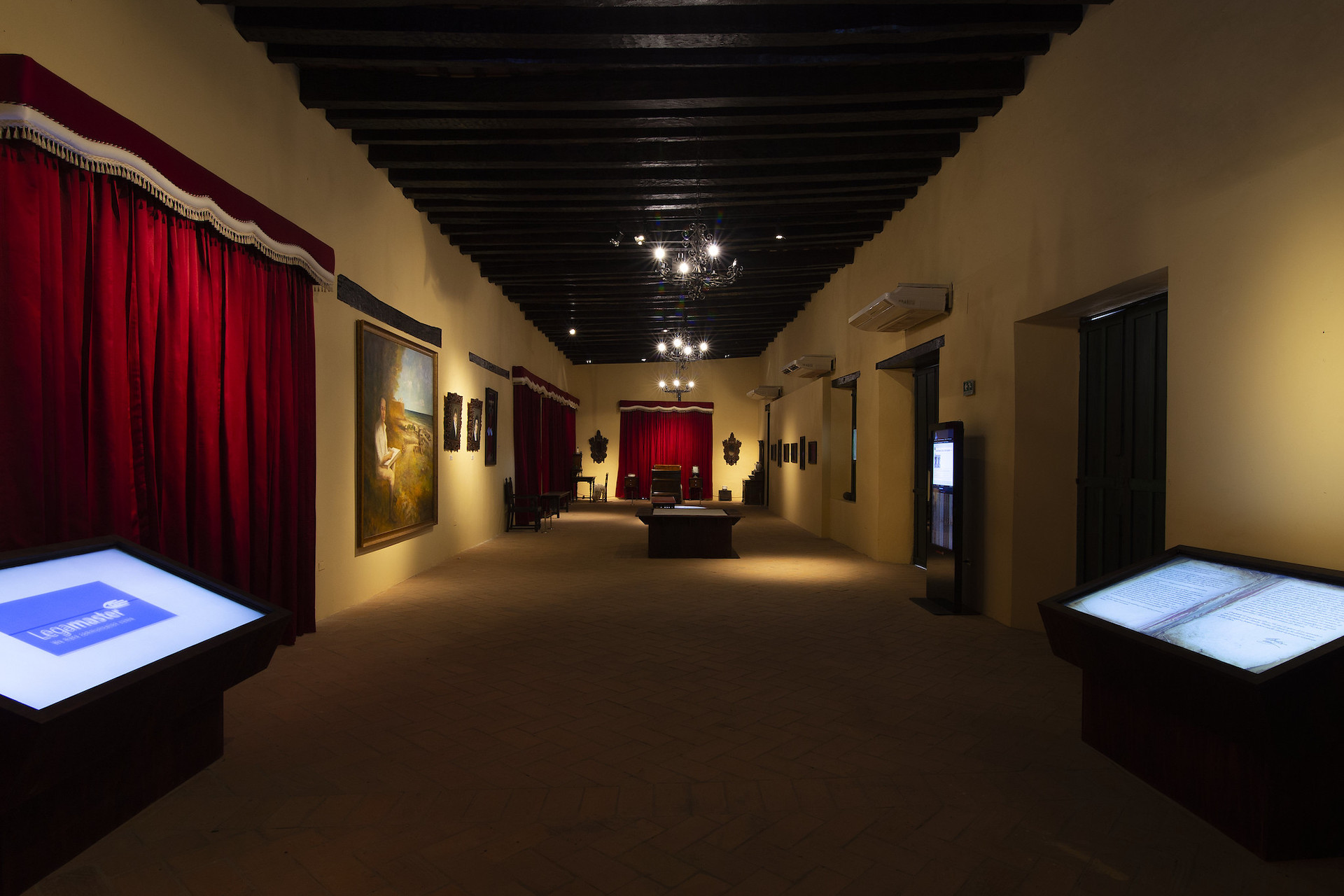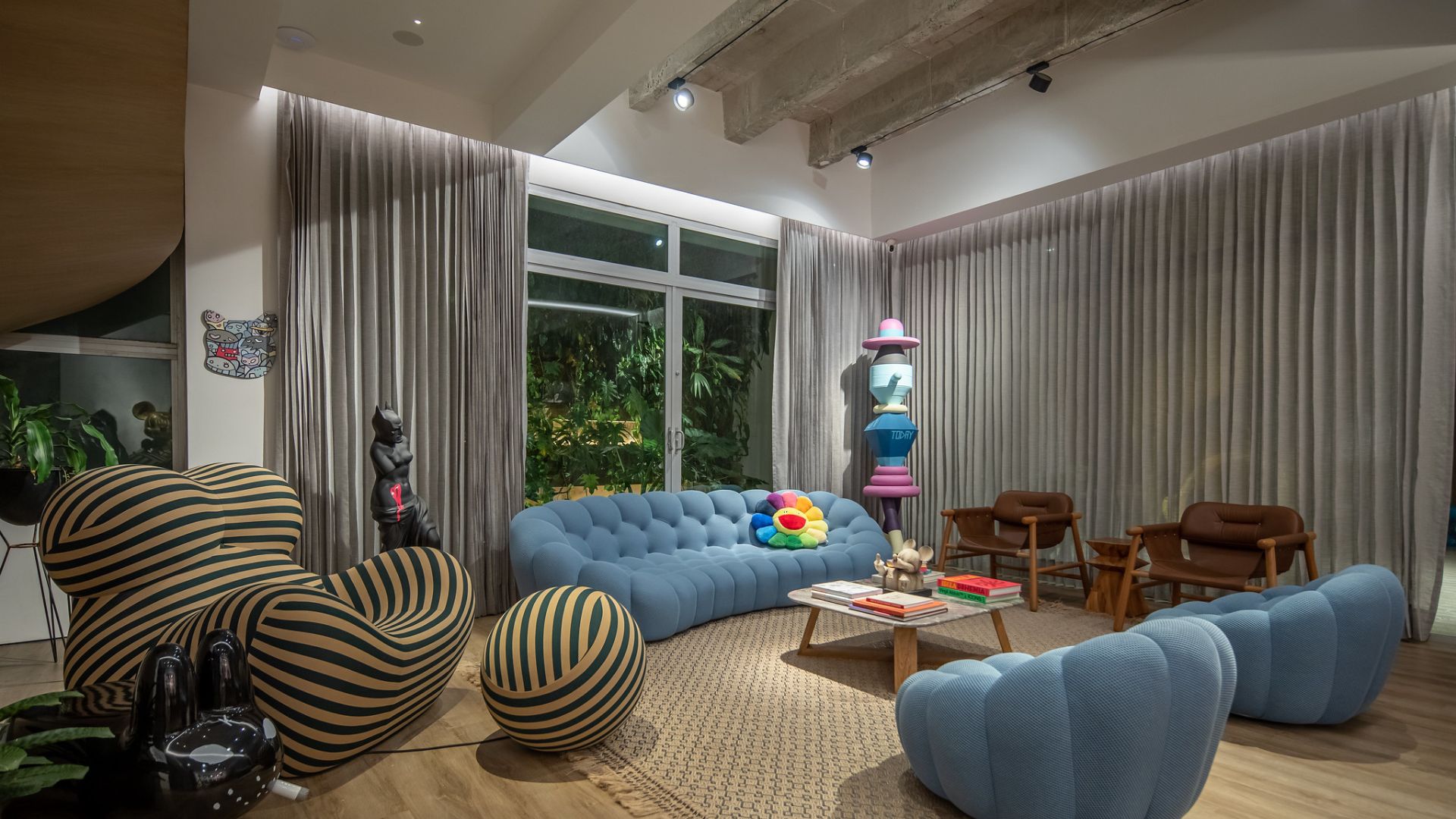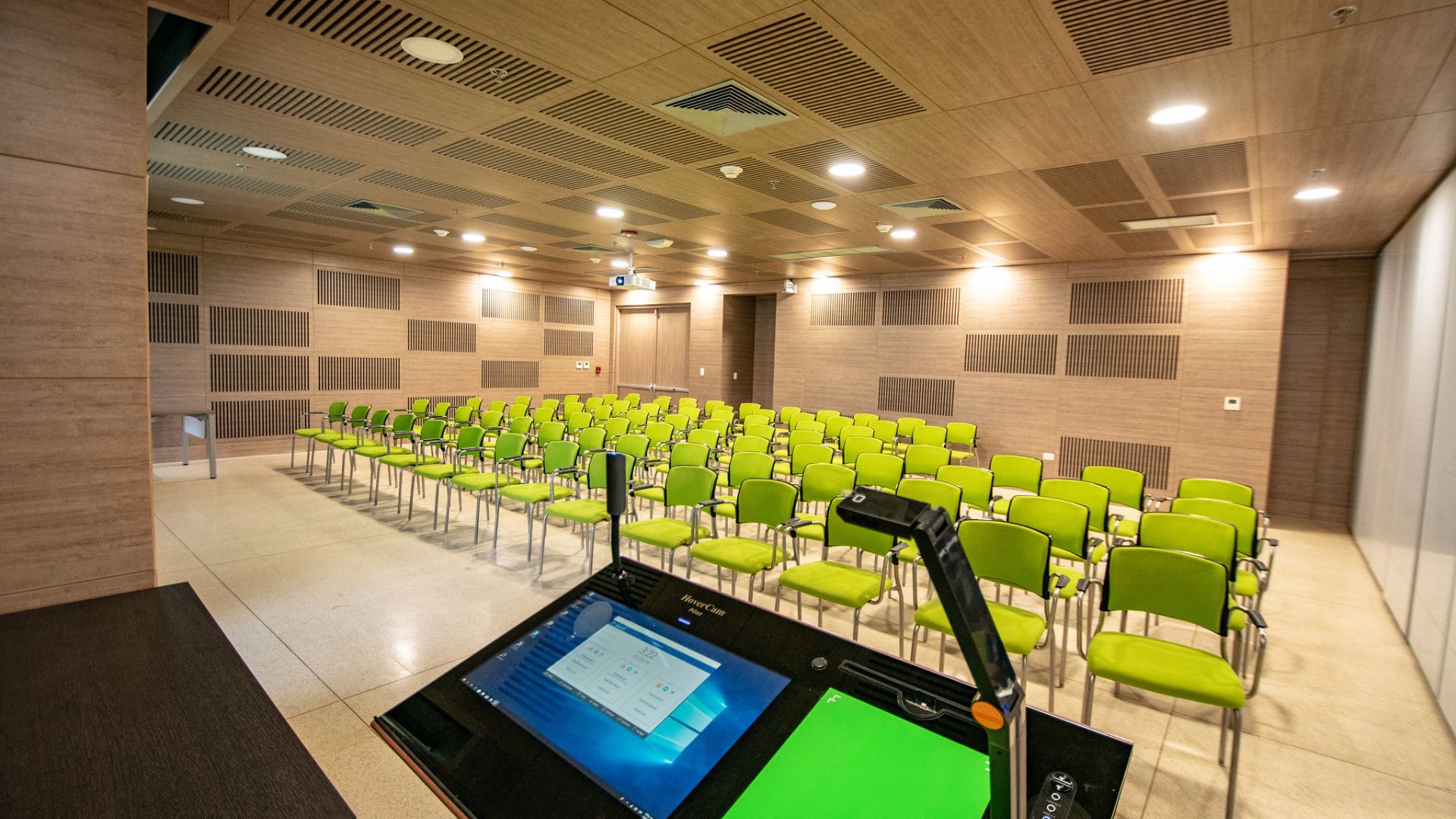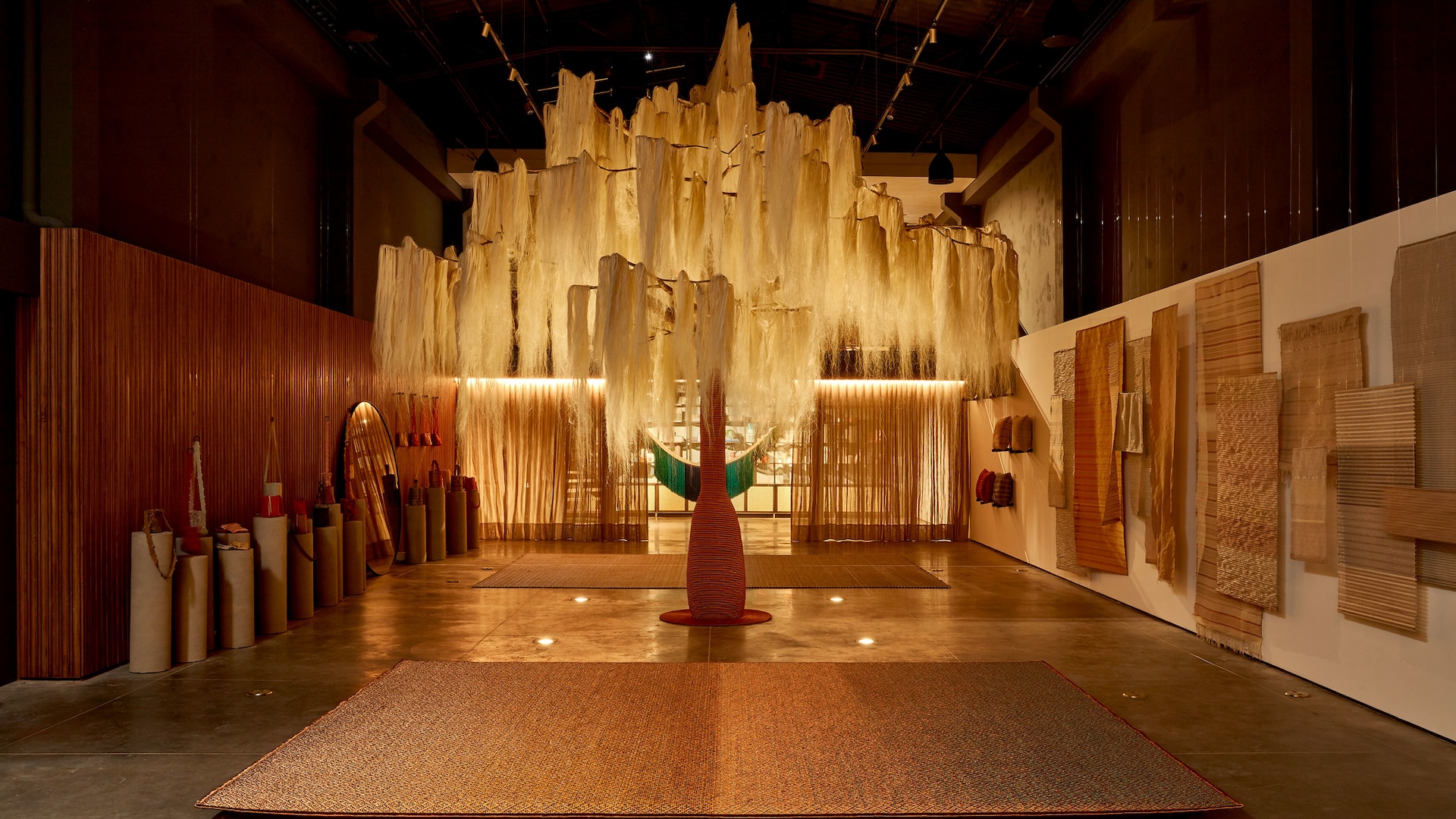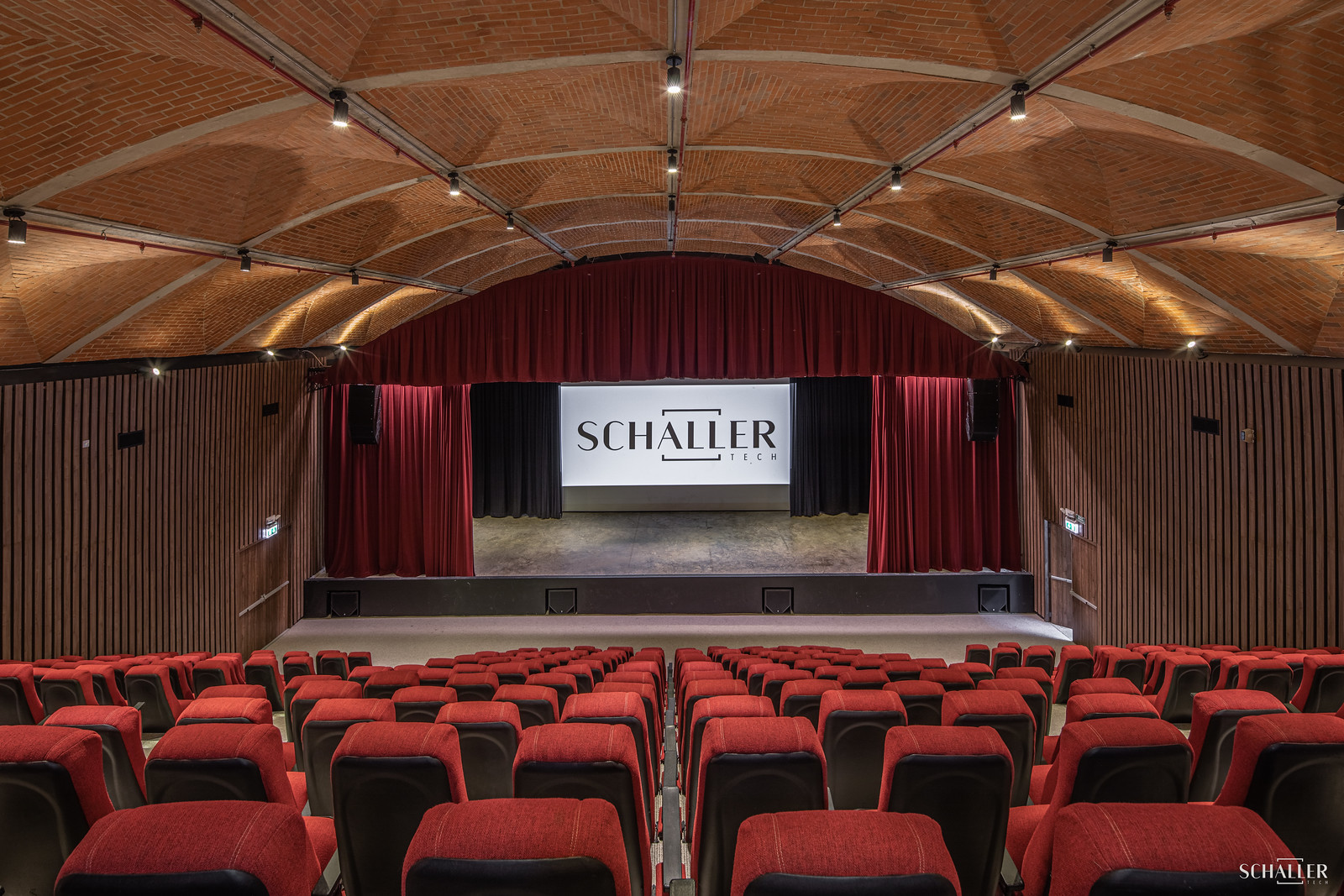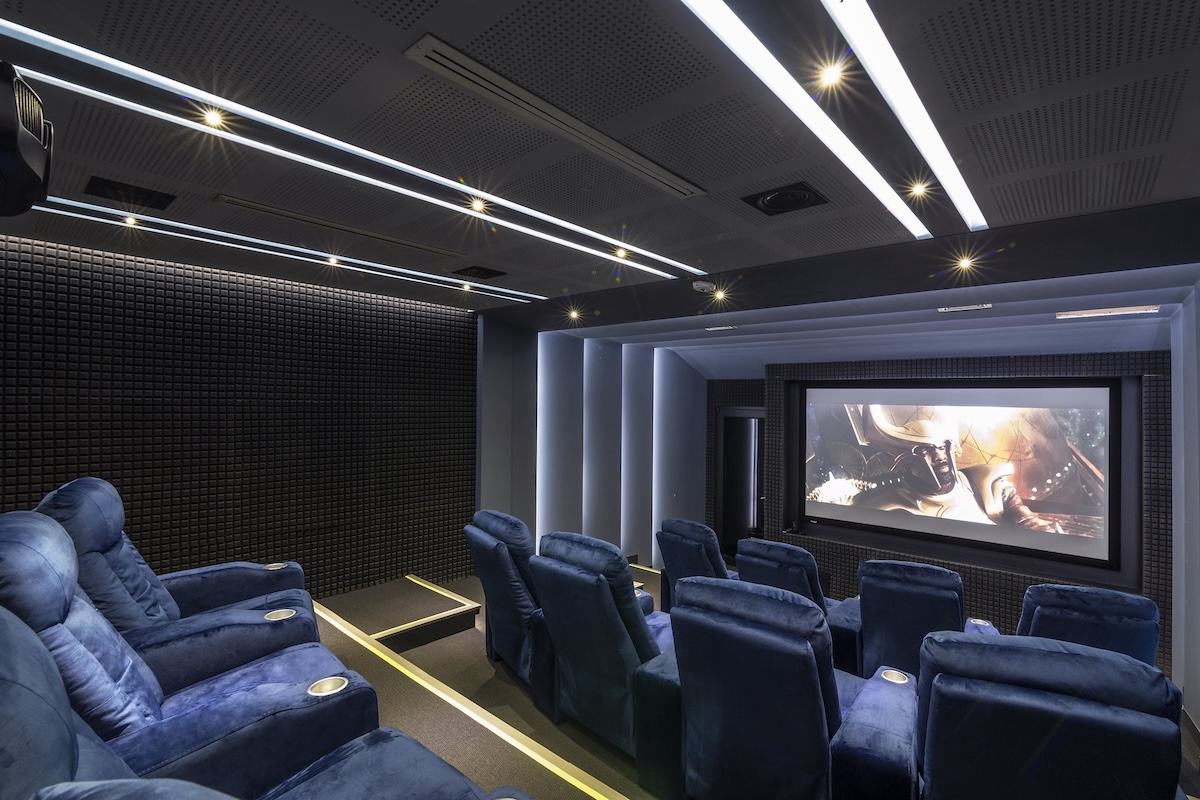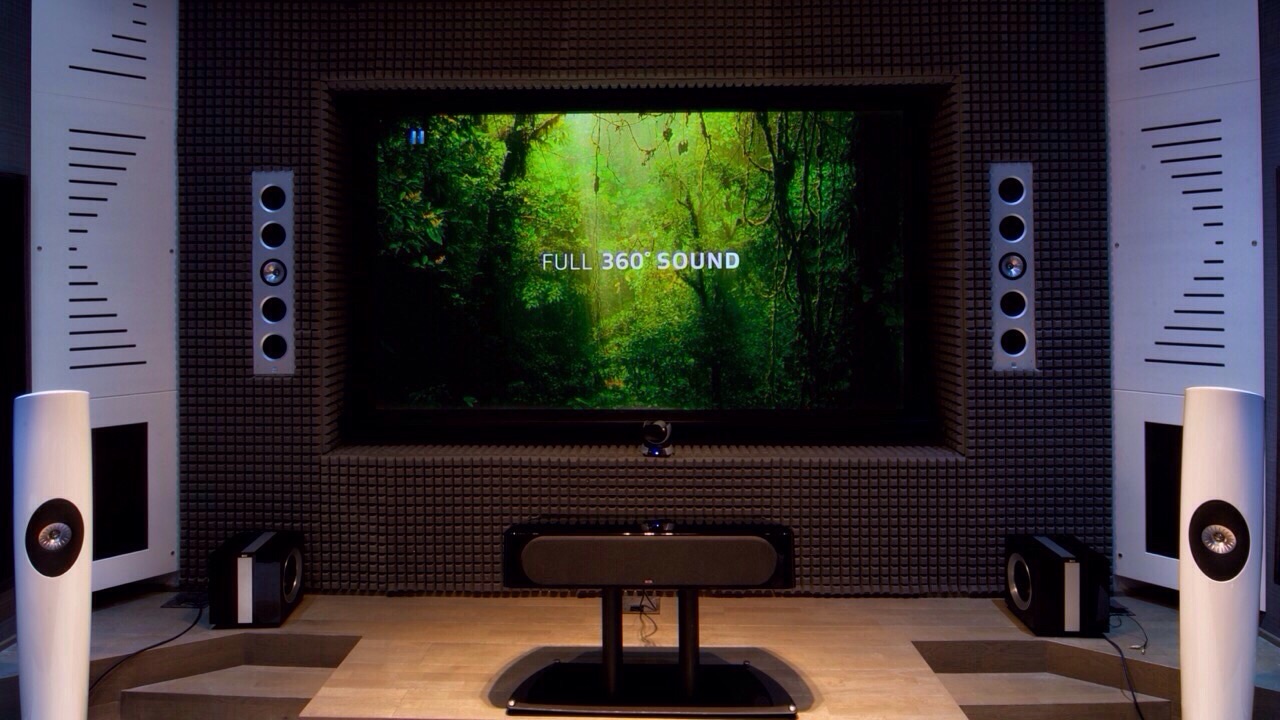Table of contents
- What is Acoustic Conditioning Technology?
- Benefits of Acoustic Conditioning Technology for Home Theater
- Components of Acoustic Conditioning Technology
- Placement of Acoustic Panels
- Factors to Consider when Installing Acoustic Conditioning Technology
- DIY vs Professional Installation
- Conclusion
- Frequently Asked Questions
We’ve all experienced the magic of a movie theater’s sound system, where every whisper and explosion feels like it’s happening right around us. At Schaller Design Lab, we understand that achieving this level of immersion in your home theater requires more than just high-quality speakers; it demands advanced acoustic conditioning technology.
Diving into the world of acoustic treatments, we’ll explore how the right setup can transform your home entertainment experience. We’re here to guide you through the latest innovations in soundproofing, absorption, and diffusion that are essential for that perfect cinematic ambiance. Join us as we unveil the secrets to creating an audio environment that rivals the best movie theaters, right in the comfort of your home.
What is Acoustic Conditioning Technology?
When we talk about acoustic conditioning technology, we’re referring to the sophisticated processes and materials designed to control sound quality within a room. It’s all about enhancing how sound waves interact with the room’s interior, thus ensuring that our favourite movies sound just as epic at home as they do in a high-end movie theater.
At Design Lab, we’ve mastered the use of acoustic panels, diffusers, and bass traps as part of our sound conditioning toolkit. Acoustic panels absorb unwanted sound reflections that can muddle dialogue and weaken audio fidelity. These panels are typically made from high-density foam or other sound-absorbing materials and are crucial in reducing reverberation and echo.
Diffusers serve a slightly different purpose. Instead of absorbing sound, they scatter it, spreading the audio waves across a space to create a more natural sound experience. Well-placed diffusers can prevent dead spots and overly live spots in your home theater, balancing the sound throughout the room.
Bass traps are essential, specially targeting the lower frequencies that often cause acoustic issues. These devices are usually installed in the room’s corners, where bass tends to build up and become boomy or overwhelming. By capturing these low-end frequencies, bass traps help to clarify the overall sound profile.
It’s crucial to recognize that acoustic conditioning is a precise science. The placement and selection of these acoustic solutions must be tailored to the specific dimensions and characteristics of the space they’re in. We leverage cutting-edge technology to analyze room acoustics and identify optimal placements and materials. This involves complex calculations and modelling, ensuring every element of your home theater is sonically balanced.
Ultimately, our goal at Design Lab is to create a Sound Oasis – a space where audio perfection is not just a dream but our standard. Whether it’s the soft whisper of dialogue or the booming explosion of an action scene, acoustic conditioning technology makes it all come to life with stunning clarity and presence.
Benefits of Acoustic Conditioning Technology for Home Theater
Improved Sound Quality

A stylish home theater setup showcasing a large screen with vibrant visuals, ambient lighting, and high-quality speakers, creating an immersive audiovisual experience.
When we design home theaters at Design Lab, one of our primary goals is to enhance the sound quality to the point where it rivals professional cinemas. Acoustic conditioning technology is pivotal in making this happen. The sophisticated materials and strategic placement of acoustic solutions drastically reduce reverberations and echoes. Sound clarity is no longer compromised by the home theater’s architecture.
Incorporating acoustic panels, bass traps, and diffusers transforms erratic sound waves into smooth, clear audio. This direct manipulation of sound pathways ensures that dialogue remains crisp, and the nuances in music and sound effects are preserved. With reduced background noise, even the softest whisper is heard with perfect clarity, making every viewing experience exactly what it’s meant to be.
Immersive Experience
Achieving an immersive experience in a home theater isn’t just about having the latest equipment; it’s about how sound interacts with the environment. Our expertise at Design Lab integrates acoustic conditioning technology to envelop you in sound that’s not just heard, but also felt.
- Strategic Placement: Ensuring acoustic materials are correctly placed for optimal sound immersion.
- Customized Solutions: Tailoring the acoustic design to the unique dimensions and characteristics of each home theater.
- Balanced Environment: Crafting a space where sound is evenly distributed, creating a cocoon of audio.
Specially calibrated for each room, these technologies enable sound waves to move freely yet deliberately, fostering an illusion of depth and movement that turns movies and music into three-dimensional experiences. The result is a home theater where every seat is the best seat in the house and where the line between audience and performance disappears.
Components of Acoustic Conditioning Technology
When setting up an optimal home theater, understanding the components of acoustic conditioning technology is key. Each element plays a pivotal role in enhancing the overall sound quality. Let’s dive into some of the core components our team at Design Lab considers essential for an impactful auditory experience.
Absorption Panels
Absorption panels are vital in minimizing sound reflections that can muddle audio clarity. These panels are typically made of high-density foam or fibrous materials that trap sound waves. By strategically placing them on the walls, especially at first reflection points, we effectively absorb unwanted noise, allowing for purer sound delivery. Our utilization of absorption panels ensures that dialogue and sound effects are heard as intended, without the distracting echo or room resonance.
Diffusion Panels
To prevent flat spots and dead zones in the home theater, diffusion panels scatter sound waves throughout the space. These come in various designs, each engineered to diffuse sound energy across a range of frequencies. Design Lab integrates diffusion panels to break up and redistribute sound, which creates a more natural and immersive listening environment. This diffusion ensures that every seat experiences high-quality acoustics, regardless of location in the room.
Bass Traps
Low-frequency sounds can be particularly challenging. That’s where bass traps come in, absorbing low-frequency sound waves that tend to accumulate in corners and along wall boundaries. Design Lab implements bass traps to tame these problematic frequencies, helping to maintain a clean bass response and preventing boominess. Placement and the type of bass trap used are key factors in achieving the desired acoustic control in a home theater setting.
By incorporating these components with precision, we at Design Lab ensure the creation of an acoustically optimized space where clear and vibrant sound is a given. Balancing absorption, diffusion, and low-frequency control transforms any room into an audio haven, rivalling even the most state-of-the-art movie theaters. With the right acoustic conditioning technology, a home theater can provide an unmatched entertainment experience.
Placement of Acoustic Panels
Wall Placement
When it comes to wall placement, proper positioning of acoustic panels is crucial for achieving the best sound quality in a home theater. Absorption panels should be placed at the first points of sound reflection. These points are located on the side walls at the same distance from the speakers as the listener. By installing panels here, we significantly reduce echo and improve overall sound clarity. Panels placed behind speakers and listeners can also absorb reflective sounds that muddy the audio.
Additionally, diffusion panels are best placed on the rear wall to break up standing waves and echo. The patterned surface of the diffuser separates incoming sound waves, spreading them evenly throughout the room.
Ceiling Placement
Acoustic panels on the ceiling play a vital role in preventing sound reflections that come from above. For optimal sound control, we install absorption panels directly above the listening area—this significantly diminishes echoes that bounce off flat ceiling surfaces which would otherwise interfere with sound clarity.
If we have a high ceiling, especially in Design Lab-designed theaters, we sometimes opt for suspended acoustic baffles. These vertically hanging panels add an extra layer of sound absorption which is particularly effective in managing sound in larger spaces with voluminous acoustics.
Corner Placement
Bass traps are essential in the corners of a home theater. Our team at Design Lab often emphasizes that corners are where low-frequency waves tend to converge and amplify. Installing bass traps in these areas minimizes the resonance effect, ensuring that the bass in your home theater is tight and accurate.
For maximum effectiveness, it’s best to fit these traps from floor to ceiling in each corner. This approach guarantees that we capture as many of the problematic frequencies as possible, smoothing out the performance across the sound spectrum.
Factors to Consider when Installing Acoustic Conditioning Technology
Room Size and Shape
When outfitting your home theater with the latest acoustic conditioning technology, we at Design Lab emphasize the critical role played by the room’s size and shape. Square rooms tend to create problematic standing waves, making elongated or irregular shapes a better choice for acoustic balance. Large rooms may require more extensive acoustic treatment, utilizing a greater number of absorption panels and diffusers to control sound effectively. Conversely, in smaller rooms, strategic panel placement becomes crucial to avoid over-dampening and a dead acoustic space. Our experience suggests that leaving some reflective surfaces untreated can maintain a certain liveliness in the sound, enhancing the overall experience.
| Room Size | Treatment Needed |
|---|---|
| Small | Strategic Placement |
| Medium | Moderate Coverage |
| Large | Extensive Treatment |
Speaker Placement
Proper speaker placement stands as a cornerstone of home theater design. We understand that speakers are the primary sources of sound, and their position directly influences how sound interacts with acoustic treatments. Front speakers should have a clear line to the listener, with absorption material at first reflection points to reduce echo. Subwoofers benefit from corner placement, near bass traps, to manage low-frequency build-up. We ensure the surround speakers are positioned at the correct angles relative to the listening area for an immersive experience.
- Front Speakers: Clear Line to Listener, Absorption at Reflection Points
- Subwoofers: Near Corners with Bass Traps
- Surround Speakers: Correct Angles for Immersive Sound
Personal Preferences
Our team at Design Lab knows that personal preferences play a vital role in the acoustic conditioning process. We encourage clients to differentiate between sound clarity for movie dialogue, music fidelity, or a balanced mix for general entertainment purposes. These preferences will dictate the type and extent of acoustic treatments employed in the home theater. Some may prefer a more Reverberant Environment for a concert hall feeling, while others seek crystal-clear speech intelligibility for dialog-heavy films. We work to understand these individual needs and ensure our acoustic solutions cater to them, striking the perfect balance for your unique auditory tastes.
- Sound Clarity for Movie Dialogues
- Music Fidelity for Audiophiles
- A Balanced Mix for Versatility
By keeping in mind the room size and shape, optimizing speaker placement, and considering personal auditory preferences, we navigate the complexities of acoustic conditioning to deliver a tailored home theater experience.
DIY vs Professional Installation
Pros and Cons of DIY Installation

A stylish living room setup showcasing a large TV, a ceiling-mounted projector, and a comfortable seating area, creating an ideal environment for a home theater experience.
Tackling the installation of acoustic conditioning on your own can be a fulfilling project with a few distinct advantages. The primary benefit is cost savings. By eliminating labor costs, the budget for your home theater can stretch further. DIY also provides the flexibility to work at your own pace and make adjustments as you see fit, without the constraints of schedules and third-party methodologies.
However, there are several downsides to consider when going the DIY route. First and foremost, you might lack the technical expertise required, which could result in less-than-ideal acoustic outcomes. Without substantial knowledge, identifying the right materials and technologies becomes a challenge, potentially leading to wasted resources and time. Lastly, DIY installation can be a time-consuming endeavor, especially for those not well-versed in acoustics and home theater setup.
Pros and Cons of Professional Installation
When you bring in experts like us at Design Lab for your home theater’s acoustic conditioning, the primary advantage is our professional expertise. We have the skills to optimize sound quality based on room dynamics, which means you’re more likely to achieve that coveted acoustic balance. Another pro is the time efficiency that comes with professional installation. Our team can work quickly and efficiently, having the process completed much faster than a DIY project.
On the flip side, the costs associated with hiring professionals are significantly higher compared to a DIY approach. There’s also the question of availability; coordinating schedules with a professional team necessitates advanced planning. In some cases, you might find there’s a lack of control over the process, as you’re entrusting your vision to another party, which could lead to frustration if there’s any misalignment in expectations.
By weighing the pros and cons of both DIY and professional installation, you can make a more informed decision that aligns with your home theater goals, budget, and personal preferences. Consider the efficiency and expertise of a professional team against the satisfaction and potential savings of a DIY approach.
Conclusion
We’ve walked through the essentials of acoustic conditioning for your home theater, underlining that the room’s dimensions and layout play a pivotal role. Remember, it’s all about finding that sweet spot where sound harmoniously fills the space without overwhelming it. We’ve also tackled the nitty-gritty of speaker placement, ensuring you get the most immersive experience. Whether you choose the DIY route for its cost-effectiveness and customization or opt for the finesse of professional installation, it’s crucial to align your choice with your vision for the space. Ultimately, our guidance aims to help you create a sonic haven that resonates with your personal taste and enhances your cinematic indulgence.
Frequently Asked Questions
What factors should be considered when installing acoustic conditioning in a home theater?
Acoustic balance in a home theater depends on the room’s size and shape. Small rooms require strategic panel placement to prevent over-dampening. Additionally, proper speaker placement is crucial for optimal sound.
How important is room shape and size in acoustic conditioning?
Room size and shape are critical to achieving acoustic balance. They determine the extent of acoustic treatment needed and influence how sound waves travel and interact within the space.
Where should front speakers and subwoofers be positioned for optimal sound?
Front speakers should be placed at ear level, equidistant from the screen. Subwoofers perform best when positioned in corners or along the front wall to enhance bass response.
How does personal preference play a role in home theater acoustic treatments?
Personal preferences dictate the type and extent of acoustic treatments, allowing homeowners to tailor the audio experience to their tastes while considering practical acoustic principles.
What are the pros and cons of DIY vs. professional installation of acoustic conditioning?
DIY installation can be cost-effective and flexible but may lack in technical precision. Professional installation offers expertise and saves time but at greater expense and potentially less personal control.
Is it more cost-effective to DIY or professionally install acoustic conditioning?
DIY installations save money upfront but require a time investment and some technical know-how. Whether it’s more cost-effective than professional installation depends on one’s skill level and the complexity of the project.
Our Portfolio
Table of contents
- What is Acoustic Conditioning Technology?
- Benefits of Acoustic Conditioning Technology for Home Theater
- Components of Acoustic Conditioning Technology
- Placement of Acoustic Panels
- Factors to Consider when Installing Acoustic Conditioning Technology
- DIY vs Professional Installation
- Conclusion
- Frequently Asked Questions
